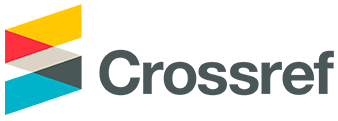STRATEGIES USED BY THE STUDENTS WITH WRONG MAJORS IN ARABIC EDUCATION TO ENHANCE LANGUAGE LEARNING MOTIVATION
Abstract
Keywords
References
Albantani, A. M., & Madkur, A. (2019). Teaching Arabic in the era of Industrial Revolution 4.0 in Indonesia: Challenges and opportunities. ASEAN Journal of Community Engagement, 3(2), 3.
Alfarisy, F. (2022). The Use of SILL Oxford on Understanding the Speaking Learning Strategies. International Journal of Linguistics, Literature and Translation (IJLLT), 11. https://doi.org/10.32996/ijllt.2022.5.6.11
Ali, R. (2018). “Wrong Majors Phenomenon”: a Challenge for Indonesia in Molding Globally Competent Human Resources to Encounter Demographic Dividend. JKAP (Jurnal Kebijakan Dan Administrasi Publik), 22(1), 52. https://doi.org/10.22146/jkap.30242
Atika, R. N. (2020). Interactions Among Learning Styles, Language Learning Strategies and Gender of Efl Learners. SALEE: Study of Applied Linguistics and English Education, 1(01), 67–82. https://doi.org/10.35961/salee.v1i01.79
Chamot, A. U. (1987). A Study of Learning Strategies in Foreign Language Instruction. First Year Report.
Chankseliani, M., Qoraboyev, I., & Gimranova, D. (2021). Higher education contributing to local, national, and global development: new empirical and conceptual insights. Higher Education, 81(1), 109–127. https://doi.org/10.1007/s10734-020-00565-8
Cohen, A. D. (2014). Strategies in learning and using a second language. Routledge.
Creswell, J. W. (2014). Research Design: Qualitative, Quantitative, and Mixed Methods Approaches. In วารสารวิชาการมหาวิทยาลัยอีสเทิร์นเอเชีย (4th ed., Vol. 4, Issue 1). SAGE Publications.
Dewi, I. S. (2016). Bahasa Arab dan Urgensinya dalam Memahami Al-Qur’an. Kontemplasi: Jurnal Ilmu-Ilmu Ushuluddin, 4(1), 39–50.
Fauzi, M. F., & Anindiati, I. (2021). Improving the Motivation of Students in Arabic Language Learning through Learning Management System. Izdihar : Journal of Arabic Language Teaching, Linguistics, and Literature, 4(3), 257–274. https://doi.org/10.22219/jiz.v4i3.19110
Fithriyah, Kasim, U., & Yusuf, Y. Q. (2019). The language learning strategies used by learners studying Arabic and English as foreign languages. Dirasat: Human and Social Sciences, 46(1), 310–321. https://doi.org/10.35516/0103-046-001-020
Griffiths, C. (2004). Language-learning strategies: Theory and research (Vol. 1). Citeseer.
Gusti, D. A. (2019). Perbedaan Efikasi Diri Akademik ditinjau dari Pola Asuh Ayah dan Ibu pada Mahasiswa Salah Jurusan di Fakultas X Universitas Y. Fakultas Pendidikan Psikologi Universitas Negeri Jakarta.
Inah, E. N., & Khairunnisa, A. (2019). Hubungan Motivasi Belajar Dengan Prestasi Belajar Bahasa Arab Mahasiswa Bidikmisi. Al-TA’DIB, 12(1), 36. https://doi.org/10.31332/atdb.v12i1.1220
Johnson, R. B., & Christensen, L. (2019). Educational research: Quantitative, qualitative, and mixed approaches. Sage publications.
Krashen, S. (1981). Second language acquisition. Second Language Learning, 3(7), 19–39
.
Lailaturrohmah, F., Suharno, S., Ranto, R., Akhyar, M., & Roemintoyo, R. (2023). Analysis of students with the wrong major based on the metacognitive dimension. Jurnal Pendidikan Teknologi Dan Kejuruan, 29(1).
Lovakov, A., Chankseliani, M., & Panova, A. (2022). Universities vs. research institutes? Overcoming the Soviet legacy of higher education and research. Scientometrics, 127(11), 6293–6313. https://doi.org/10.1007/s11192-022-04527-y
Mahfud, C., Astari, R., Kasdi, A., Arfan Mu’ammar, M., Muyasaroh, & Wajdi, F. (2021). Islamic cultural and Arabic linguistic influence on the languages of Nusantara from lexical borrowing to localized Islamic lifestyles. Wacana, 22(1), 224–248. https://doi.org/10.17510/wacana.v22i1.914
Miles, M. B., & Huberman, A. M. (1994). Qualitative data analysis: An expanded sourcebook. sage.
Muradi, A., Mubarak, F., Permana, F., Hidayat, Y., & Wekke, I. (2021). Revitalization of the Existence of Arabic in Indonesia. Available at SSRN 3767448.
Nesrine Aoudjit, B. (2018). Using Oxford’s Strategy Inventory of Language Learning (SILL) to assess the strategy use of a group of first and third year EFL Algerian university students. American Scientific Research Journal for Engineering, Technology, and Sciences (ASRJETS), 42(1), 166–187. https://asrjetsjournal.org/index.php/American_Scientific_Journal/article/view/4019/1447
Nurdin, Andi Ardiansyah, Kurniati Zainuddin, A. (2016). PSYCHOLOGICAL WELL-BEING DITINJAU DARI COPING STRATEGY MAHASISWA SALAH JURUSAN Andi Ardiansyah Nurdin (. 1–11.
O’Malley, J. M., Chamot, A. U., Stewner‐Manzanares, G., Russo, R. P., & Küpper, L. (1985). Learning strategy applications with students of English as a second language. TESOL Quarterly, 19(3), 557–584.
Oxford, R. L. (1990). Language Learning Strategies: What Every Teacher Should Know.
Primayasa, W., Arifin, I., & Baharsyah, M. Y. (2020). Pengaruh Salah Pilih Jurusan Terhadap Rasa Putus Asa Mahasiswa Teknik Informatika. Nathiqiyyah, 3(1), 22–26. https://doi.org/10.46781/nathiqiyyah.v3i1.76
Purba, V. D. (2016). Penyesuaian Diri Mahasiswa Yang Kuliah Di Jurusan Yang Tidak Diminati. Prosiding Seminar Nasional Psikologi, 120–130.
Rubin, J. (2005). The expert language learner: A review of good language learner studies and learner strategies. Expertise in Second Language Learning and Teaching, 37–63.
Sugiyono. (2015). Metode Penelitian Pendidikan. Bandung. Metode Penelitian Pendidikan (Pendekatan Kuantitatif, Kualitatif, Dan R&D), 308.
Vindayani, F. (2019). Strategi Belajar Bahasa Arab Mahasiswa Menurut Model Oxford. Prosiding Konferensi Nasional Bahasa Arab V, 50–55.
Wahdah Andinia, N. W. (2017). Pengaruh Perbedaan Latar Belakang Pendidikan Terhadap Penggunaan Strategi Belajar Bahasa Arab Di Iain Palangka Raya. Prosiding Konfererensi Nasional Bahasa Arab, No 3 (2017): PROSIDING KONFERERENSI NASIONAL BAHASA ARAB III, 428–436. http://prosiding.arab-um.com/index.php/konasbara/article/view/153.
Zakiyatul Masriah. (2018). Zakiyatul Masriah Zakiyatul Masriah. 1–90.
DOI: https://doi.org/10.17509/ije.v18i2.65333
Refbacks
- There are currently no refbacks.
Copyright (c) 2025 Nabila Salsabila, Muhammad Fadli Ramadhan, Achmad Tito Rusady

This work is licensed under Creative Commons Attribution-ShareAlike 4.0 International License.




.jpg)




